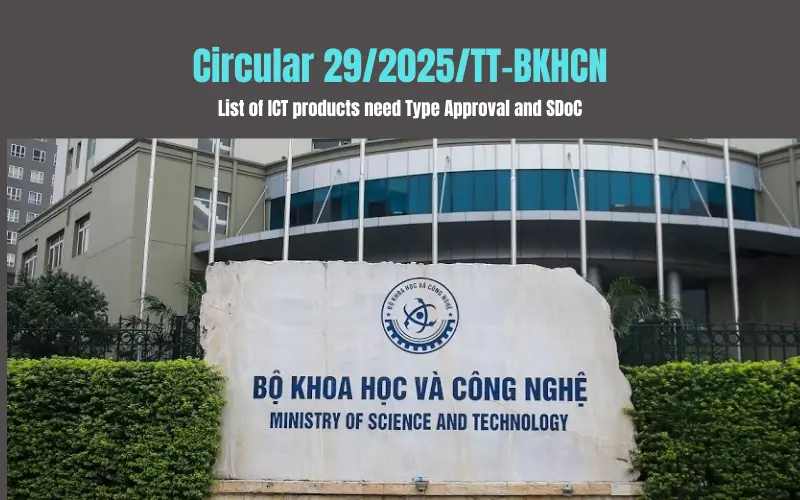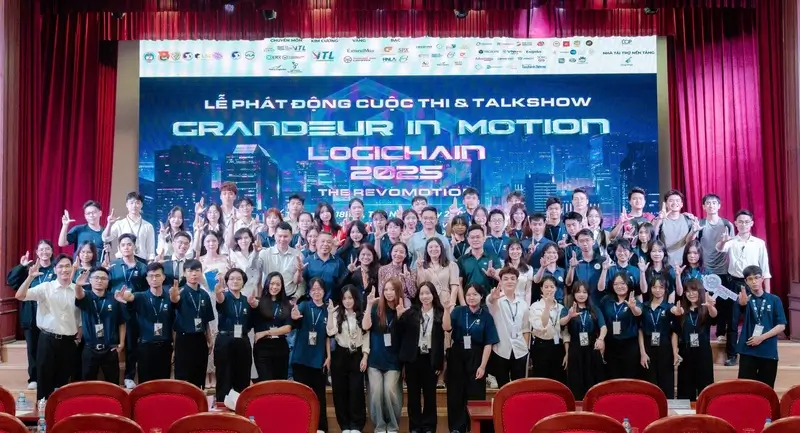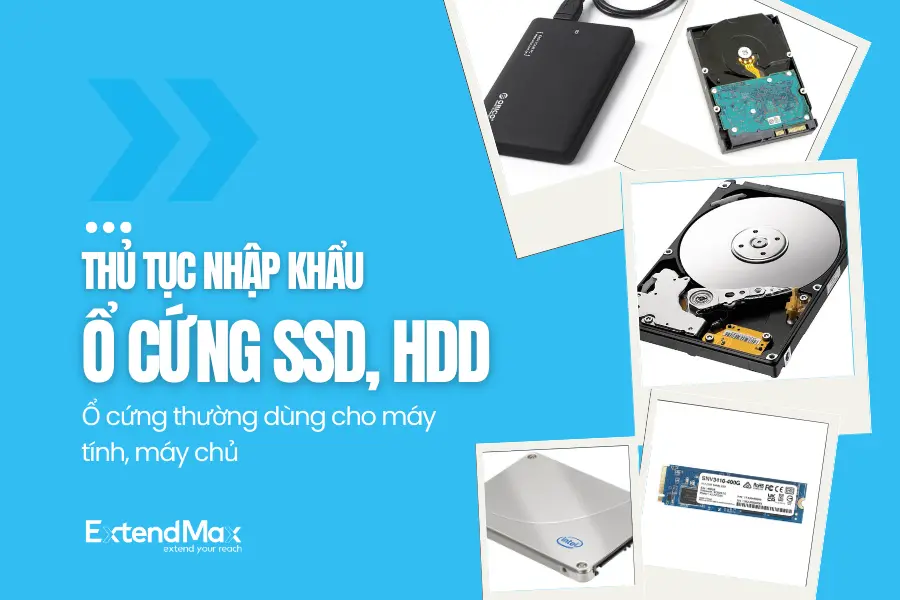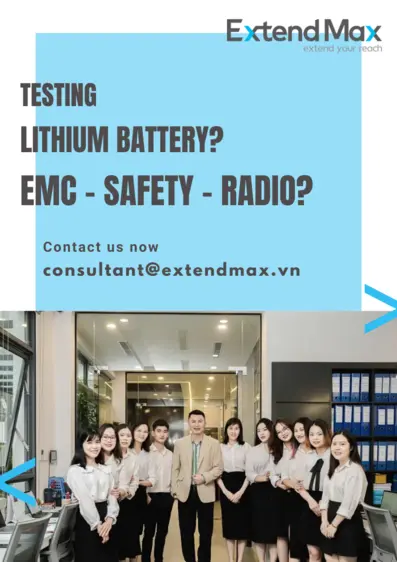EXTENDMAX – Currently on the market there are many kinds of wireless audio devices that use different technologies for different uses in life, including karaoke wireless microphones, wireless microphones for events, wirless speakers, wireless audio transmitters on the back, wireless headphones and truewireless bluetooth headsets... So what are the market access requirements to export wireless sound devices to Vietnam? These wireles sound devices need certification of conformity certificate or type approval certificate? What is the procedure to import wireless audio equipment? Are wireless audio devices subject to product quality inspection registration process applicable for imported products? Why do we need to certify wireless audio devices? Which HS code does wireless audio equipment have to go through quality inspection registration process? Can wireless audio equipment interfere with UHF cell phone or television networks? Let's find out answers for all your concerns through ExtendMax below article.
1. How many kinds of wireless sound devices are there?
Wireless sound devices are divided into main groups, classified by RF technology as follows:
(1) Wireless audio equipment used in events using the UHF band: This type includes wireless microphones, body pack transmitters, lapel microphones, earphones... using radio waves in the UHF frequency band, to serve events, meeting rooms... This type of wireless sound device is on the list of required product quality inspection registration, regulatory certification of conformity (MIC ICT Type Approval) when exported to Vietnam. At the same time, it must meet the operating conditions in terms of frequency and broadcasting power according to Circular 08/2021/TT-BTTTT.
(2) Wireless sound devices using Bluetooth and Zigbee technology: This type includes wireless bluetooth speaker, Bluetooth wireless earphone and headsets (true wireless), some accessories using Zigbee technology... These products are out scope of application according to QCVN 91:2015/BTTTT and are usually not subject to product quality inspection registration, certification of conformity (MIC ICT Type Approval) due to having a transmit power level of less than 60mW EIRP. However, sometimes the exporter may get trouble in customs clearance so we recommend to apply for MIC Exemption Letter for this product group.
(3) Wireless sound devices for events using DECT technology: This includes wireless microphones, body pack transmitters, lapel microphones, earphones... using DECT technology. This type of DECT audio device is temporarily not allowed to be imported and used in Vietnam (excluding DECT phones which are considered to be in telephone group, not wireless sound device group).
Pursuant to the current List of potentially unsafe products and goods under the management responsibility of the Ministry of Information and Communications, is Circular No. 02/2022/TT-BTTTT (also known as the list of goods under group 2, or the list of equipment under mandatory scope for Type Approval and SDoC) and Circular No. 08/2021/TT-BTTTT stipulating broadcast frequencies, broadcast power, spurious emissions.. .. Procedures for importing and trading in products and goods being wireless audio equipment include noting and following the following steps:
2. Operational conditions applicable to wireless sound devices?
(Pursuant to Appendix 8 of the MIC Circular 08/2021/TT-BTTTT)
| Frequency band | Main emission | Spurious emission | Other conditions |
| 40,66÷40,70 MHz | ≤ 100 mW | According to the spurious emission limit 6 | The channel width shall not be more than 200 kHz and shall be within the specified frequency bandt. |
| 87÷108 MHz | ≤ 20 nW ERP | According to the spurious emission limit 6 | - Personal FM transmitters may only use the 87÷108 MHz band. -The channel width shall not be more than 200 kHz and shall be within the specified frequency bandt. |
| 87÷108 MHz | ≤ 3µW ERP | According to the spurious emission limit 6 | - This limit is for wireless audio devices (excluding personal FM transmitters). - The channel width shall not be more than 200 kHz and shall be within the specified frequency bandt. |
| 182,025÷182,975 MHz | ≤ 30 mW ERP | According to the spurious emission limit 6 | - The channel width shall not be more than 200 kHz and shall be within the specified frequency bandt. |
| 217,025÷217,975 MHz | ≤ 30 mW ERP | According to the spurious emission limit 6 | - The channel width shall not be more than 200 kHz and shall be within the specified frequency bandt. |
| 218,025÷218,475 MHz | ≤ 30 mW ERP | According to the spurious emission limit 6 | - The channel width shall not be more than 200 kHz and shall be within the specified frequency bandt. |
| 470÷694 MHz | ≤ 30 mW ERP | According to the spurious emission limit 6 | - Professional wireless audio equipment for events - The channel width shall not be more than 200 kHz and shall be within the specified frequency bandt. - The equipment shall be capable of automatically adjusting and adjusting the operating frequency. - The device must not operate in conjunction with broadcast TV channels in the operating area. - The minimum distance between the center frequency of the equipment when in operation and the upper and lower adjacent TV frequency channel(s) in the operating area is 400 kHz. - The equipment shall not cause harmful interference to broadcast television receivers in the operating area. |
| 1795÷1800 MHz | ≤ 20 mW EIRP; ≤ 50 mW EIRP (for wireless lapel microphones) | According to the spurious emission limit 6 |
(Wireless audio transmission equipment using the 470-694 MHz band with a transmitting power of over 30 mW ERP serving operations in the field of radio and television is not subject to the above conditions)
Wireless audio transmission equipment using the frequency over 694 MHz shall be forbidden to be imported or used in Vietnam as violation to frequency allocation plan for 4G IMT LTE Advance
In the event that the product does not meet the above operating conditions, especially for frequencies and broadcast power, it may cause serious interference to mobile phone networks and UHF television channels. Recently, the Authority of Radio Frequency Management (ARFM) has sent an official letter to the Department of E-commerce and Digital Economy - Ministry of Industry and Trade reflecting that there are many wireless microphones and wireless portable speakers sold on websites or e-commerce applications without a MIC ICT Type Approval certificates or announcement of conformity. The Department of E-commerce and Digital Economy - Ministry of Industry and Trade has requested e-commerce websites or applications such as Sendo.vn, Lazada.vn, Shopee.vn to immediately remove infringing or uncertified products.
3. Brief procedures for importing, getting Type Approval certificate, Declaration of Confomity
a Procedures applicable to imported wireless audio devices
Import procedures according to regulations of the Ministry of Information and Communications
(1) Apply for product quality inspection registration process for wireless sound devices
(2) Submit the product quality inspection registration form to the customs authority
(3) Complete customs clearance for the wireless sound devices and taking the goods to the warehouse
(4) Product testing according to applicable technical regulations
(5) Apply for Certificate of Conformity for wireless sound devices
(6) Submit Self-assessment Declaration of Conformity (SDoC) to VNTA
(7) Putting ICT conformity mark (ICT label) on the wireless sound devices or its packaging box before being circulated to the market
In case the importer already has the certificate of conformity and the necessary test results, the importer can carry out the SDoC process and submit Type Approval certificate to VNTA and complete the product quality inspection registration process at no time.
b Procedures applicable to locally manufactured wireless sound devices:
Procedures are carried out according to regulations of the Ministry of Information and Communications
(1) Product testing according to applicable technical regulations
(2) Apply for Certificate of Conformity for wireless sound devices
(3) Apply for Declaration of Conformity (DoC) certificate issued by the VNTA
(4) Putting ICT conformity mark (ICT label) on the wireless sound devices or its packaging box before being circulated to the market
4. Applicable test standards for wireless sound devices in Vietnam
Depends on operating frequency bands and modulation technique, applicable standards for wireless sound devices could be different, one or more QCVN of the belows:
- QCVN 54:2020/BTTTT (RF standard for bluetooth or zigbee wireless sound devices)
- QCVN 91:2015/BTTTT (RF standard for 25MHz ~ 2000MHz wireless audio equipment)
- QCVN 74:2020/BTTTT (RF standard for certain wireless sound devices which are neither bluetooth nor UHF sound devices)
- QCVN 96:2015/BTTTT (RF EMC standard for certain wireless sound devices which are neither bluetooth nor UHF sound devices)
- QCVN 112:2017/BTTTT (RF EMC standard for bluetooth or zigbee wireless sound devices)
- QCVN 130:2022/BTTTT (RF EMC for 25MHz ~ 2000MHz wireless audio equipment) (applicable from 01 July 2023)
5. Testing and in-country test laboratory designated by Vietnam MIC
For standards on RF radio transceivers and EMC compatibility, enterprises can conduct testing and testing of equipment at domestic testing laboratories designated by the Vietnam Ministry of Information and Communications or the foreign laboratories in the US, Korea, Canada, Singapore (only these 4 countries) recognized by the Ministry of Information and Communications under MRA agreements. Normally, in-country testing process will take 1-2 weeks for wireless sound devices.
6. Prepare a dossier of Certificate of Conformity for Access Point
The set of application documents for certification of conformity for Access Point composed of the below:
- ICT Type Approval application form
- Enterprise Registration Certificate (ERC) of applicant.
- Technical specifications of the product.
- Product photos including product labels.
- Testing reports issued by MIC designated local labs or oversea labs recognized by MIC under MRA
- ISO 9001 certificate of the factory or the shipping documents (according to applicable certification system)
- Some other forms prepared by ExtendMax for the customers to sign (and stamp)
Learn more about certification systems on our general guides for ICT Type Approval
7. Type Approval certification bodies designated by Vietnam MIC
Currently, the only certification body designated by the Vietnam MIC is the Telecom Metrology and Quality Center - a subsidiary of the VNTA. Applicant can submit the application documents to one of the following addresses: :
→ Telecom Metrology and Quality Center in Hanoi (VNTA building)
→ Branch of Telecom Metrology and Quality Center in Da Nang
→ Branch of Telecom Metrology and Quality Center in Ho Chi Minh City
Telecom Metrology and Quality Center will review and evaluate the applicant's certification dossier and issue a Type Approval certificate if the dossier is complete and consistent with the regulations of the MIC, VNTA.
The process of verifying documents and issuing the Type Approval certificate normally takes 2 weeks.
8. Declaration of Conformity process for wireless sound devices
Based on the issued Certificate of Regulation Conformity, the Enterprise must continue to carry out the procedures for Announcement of Regulation Conformity at the Department of Telecommunication - Ministry of Information and Communications.
a Procedure for Declaration of Conformity for imported wireless audio devices:
The applicant (importer) prepares a dossier of declaration of conformity (self-assessment declaration of conformity) for the consignment, including:
(1) Self-assessment declaration of conformity form according to Decree 74/2018/ND-CP
(2) A copy of the certificate of registration for quality inspection of the consignment
(3) Registered ICT mark (with CODE) of the importer for the first time or when having a change in ICT mark.
(4) Product technical specifications document (data sheet, specifications, user manual)
(5) Type Approval certificate of the product (together with LOA issued by manufacturer if TAC is held by manufacturer)
For imported products, the procedures for declaration of conformity shall be completed as soon as the VNTA receives the above-listed dossiers.
b Procedures for declaration of conformity for domestically produced wireless audio devices:
The enterprise prepares a set of dossiers of declaration of conformity for products according to regulations, including:
(1) Form for Declaration of Conformity according to Circular 30/2011/TT-BTTTT
(2) Conformity self-assessment form according to Decree 74/2018/ND-CP
(3) Registered ICT mark (with CODE) of the importer for the first time or when having a change in ICT mark.
(4) Product technical specifications document (data sheet, specifications, user manual)
(5) Type Approval certificate of the product issued by MIC designated Certification Body
For domestically produced products, the Department of Telecommunications receives the dossier, verify the dossier and issues a "Notice of receipt of the Declaration of Conformity" with a validity period of 3 years to the applicant (only local manufacturer can be applicant for this process).
Applicant applying for Declaration of Conformity for the first time will need to apply for an ICT CODE code and register a its own ICT mark (ICT label) to the VNTA.
The above steps are all market access requirements for importing, manufacturing and trading wireless sound device (wireless microphones, wirless speakers, wireless audio transmitters, wireless headphones and truewireless bluetooth headsets) in a comprehensive manner in compliance with the provisions of law and sub-law documents on radio equipment, telecommunications, and information technology according to regulations of the Ministry of Information and Communications.
9. How can ExtendMax help you in the market access requirements?
With many years of experience in consulting market access requirements and type approval certification for wireles sound devices products for the leading manufacturers and leading brands such as Shure, Bosch... we can support you with all market access requirements and import procedures including:
→ Evaluate the technical specification of the product, determine whether the products meets MIC requirements on operational conditions (frequency, Tx power) and allowed to be imported to Vietnam or not.
→ Evaluate documents, certificates of quality management system ISO 9001, determine the most suitable and lowest cost Type Approval certification system
→ Consulting and supporting the initial import procedures for customs clearance such as registration for performance testing, product quality inspection registration process for imported wireless sound devices.
→ Acting as local representative for applicant in carrying out testing, certification, and conformity announcement procedures for wireless audio devices
→ Apply for ICT CODE for the importer, register importer's ICT mark or apply for ICT Mark modification upon request.
→ In case businesses need to import in small quantities, or receive goods without payment from parent companies or foreign partners, ExtendMax is capable and qualified to provide good import solutions. Or simply we provide Importer of Record IOR service to solve your worries and problems.
10. Contact information for market access requirements consulting
EXTENDMAX VIETNAM COMPANY LIMITED
Hotline: +84 915 836 555 | Hanoi: +84 24 6666 3066
Email: consultant@extendmax.vn | phuong.tran@extendmax.vn
HO: ExtendMax Villa, C01-L18 An Vuong, Duong Noi urban area, Duong Noi ward, Ha Dong district, Hanoi City, Vietnam
Test laboratory: BT02-21, An Hung urban area, To Huu street, La Khe ward, Ha Dong district, Hanoi City, Vietnam
If you find our article useful and valuable in practice applications, please support us by rating it, leaving your comment at the bottom of this article, and sharing it with your colleagues or the industry. Your review will be a great motivation for us to write more detailed and valuable procedural guides for importing, exporting organizations.
↓ ↓ ↓ ↓ ↓ ↓ ↓
8. Preview of ICT Type Approval certificate issued for UHF wireless microphone
















